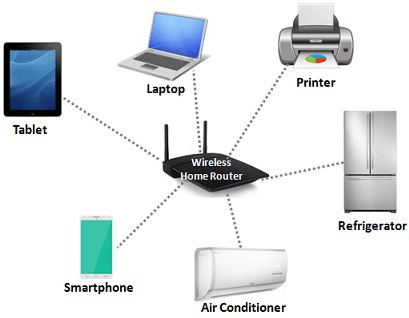Advantages and Disadvantages of the LANThe Full form of the LAN is the Local Area Network. It is a collection of devices interlinked to a single physical location, such as a home building or office. LAN could be tiny or big, varying from the home network to enterprise network having hundreds of users and devices in school or office. The total area covered under LAN would be around 1 to 10 kilometres. The data can be transmitted at the speed of 1-10Mbps. 
What is a Local Area Network (LAN)?It consists of routers, access points, cables, and other devices to connect to internal servers, web servers, and other LANs through wide area networks. Exponential growth in the information economy has significantly boosted the development of Virtual LANs that enable network administrators to logically group network nodes and partition their networks without significant infrastructure. For example, there are multiple departments in an office building like IT support, accounting, and administration. Computers of each department could be connected to the same switch and can be behaved differently. Working of the LANMost LANs are linked to the Internet at a central point: a router; Home LANs conventionally use a single router, while LANS in larger areas may opt for additional network switches for more efficient delivery. They use Wi-Fi, Ethernet, or both in pursuit of linking devices within the network. Wi-Fi is a protocol for connecting to a network through radio waves. Ethernet is a protocol for physical network connections that use ethernet cables. Several devices can be connected to LANs, including IoT devices, desktop computers, servers, printers, laptops, and game consoles. LANs normally offer shared access to internal staff to connect to servers or printers. Devices Needed to Set Up a LANInternet-connected LANs require only a router and a path for computing devices to connect to the router through Ethernet cables or a Wi-Fi hotspot. LAN requires a switch to exchange information in the absence of the Internet. Big LANs in the offices may require additional routers or switches so that the data can move swiftly and efficiently. However, not all LANs are connected to the Internet. The only precondition is to form LAN that is connected devices able to exchange information smoothly. Non-internet-connected LANs use the same networking protocol that is used on the Internet. Virtual LANSometimes, it is referred to as VLANS, splitting traffic on the same physical network into two networks. For a moment, think about installing two different LANs with their router and internet connection in the same room, but in the VLAN, it is performed in a virtual mode with the help of software instead of using physical hardware. Here, only one router and one internet connection are required. It helps with network management, particularly with huge LANs. With the subdivision of networks, Administrators can manage networks more smoothly. Advantages and Disadvantages of LAN
Disadvantages of the LAN
|
 For Videos Join Our Youtube Channel: Join Now
For Videos Join Our Youtube Channel: Join Now
Feedback
- Send your Feedback to [email protected]
Help Others, Please Share










